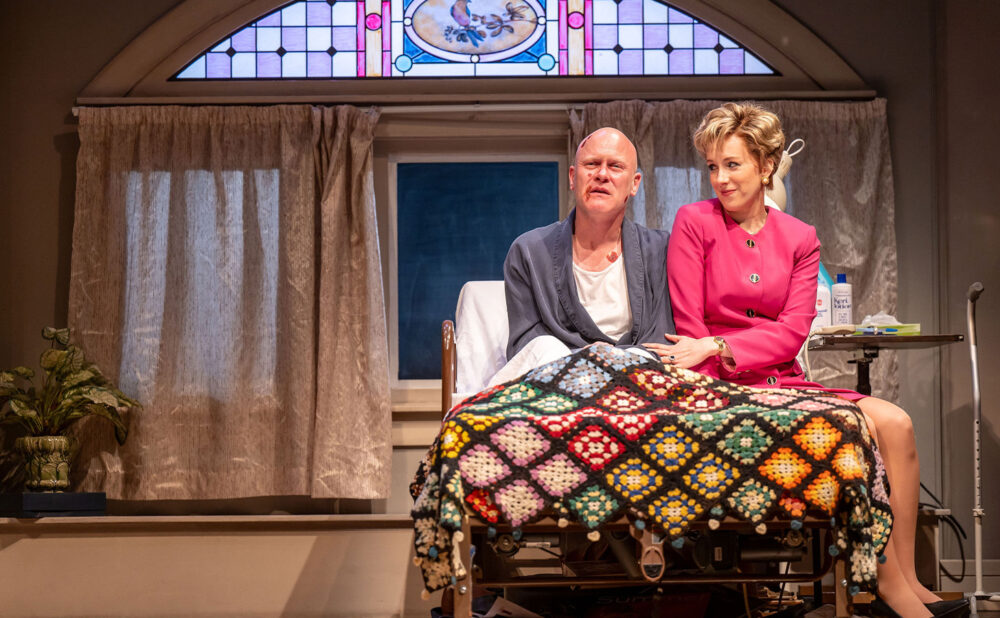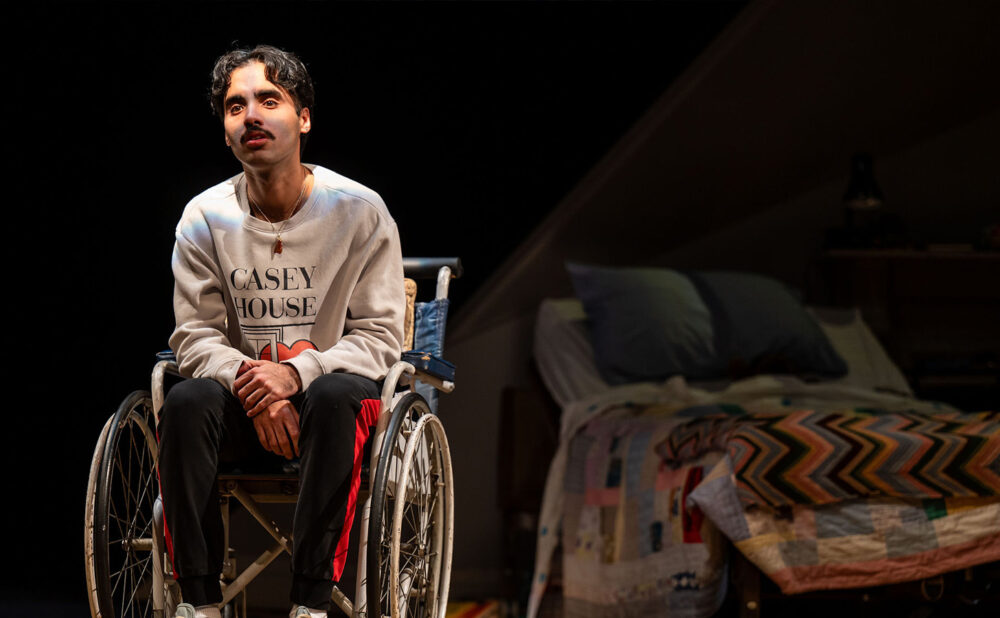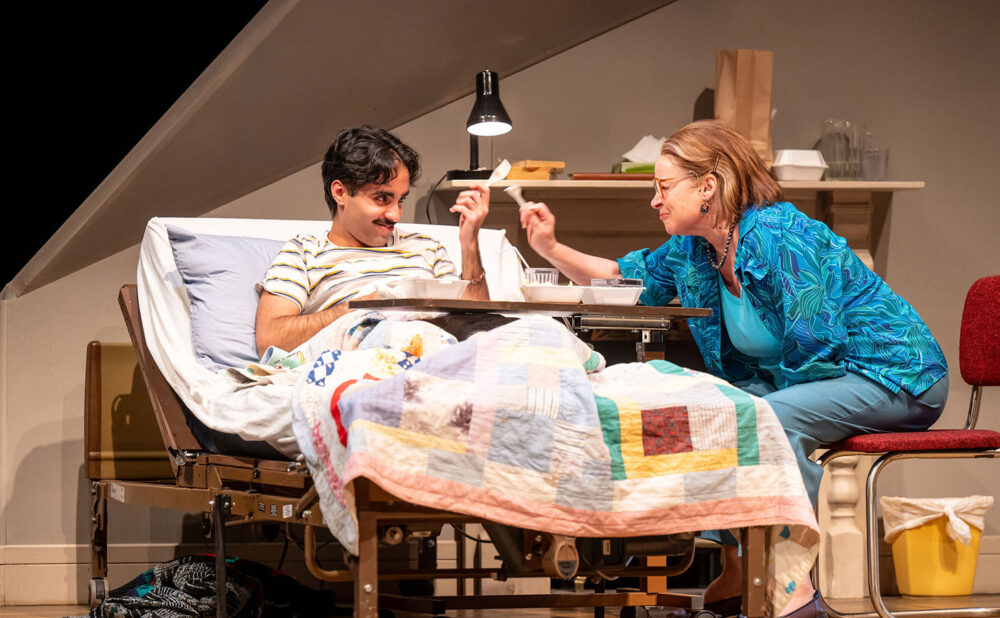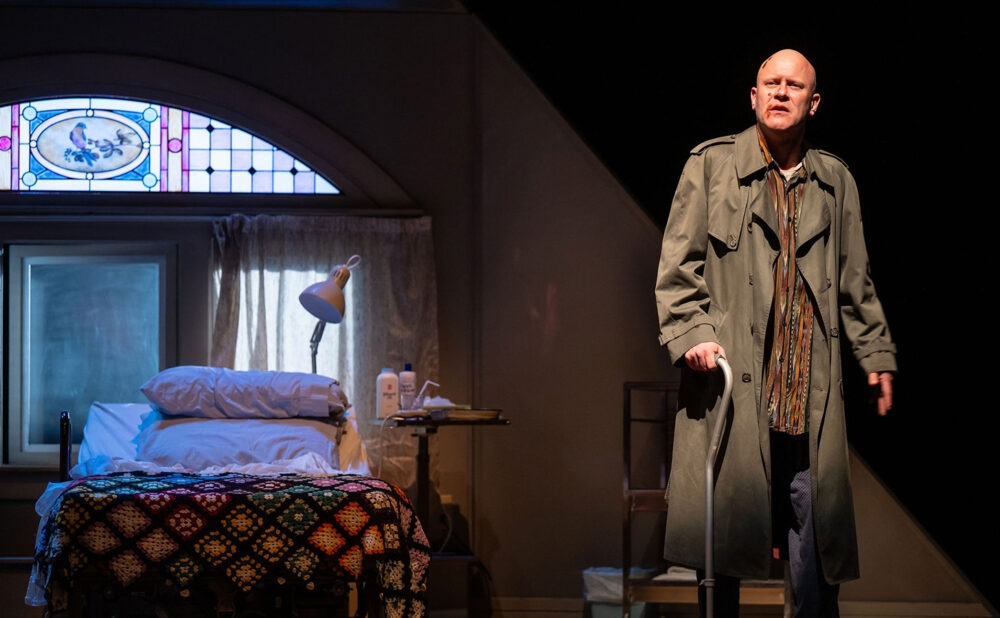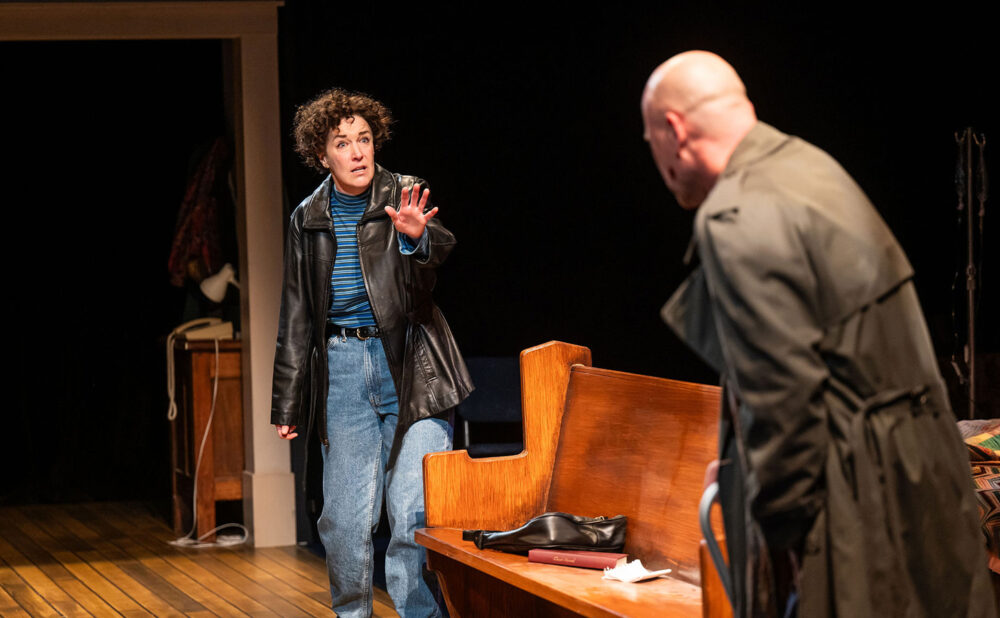Review: Believe the hype, ‘Casey and Diana’ is stellar
Acclaimed Stratford Festival production shines in Soulpepper transfer
What: Casey and Diana
Where: Soulpepper Theatre, 50 Tank House Lane
When: Now, until Sun., Feb. 11
Highlight: Director Andrew Kushnir’s cohesive vision
Rating: NNNN (out of 5)
Why you should go: It’s a hyper-local slice of queer history executed with powerful clarity.
WHEN NICK GREEN’S Casey and Diana premiered at the Stratford Festival last spring in the company’s intimate Studio Theatre, the raves followed quick and loud, declaring it superlatively “moving” and “Kleenex-demanding.”
Though I missed that short original run, a remount of Andrew Kushnir’s vibrant production is now at Soulpepper Theatre — and, yes, it’s stellar, a hyper-local slice of queer history executed with powerful clarity.
The play is set in 1991 at the Casey House, a historic Toronto hospice for people dying of AIDS. When news arrives that Princess Diana (Katherine Gauthier) will be visiting in a week — thrilling everyone, especially well-meaning middle-aged volunteer Marjorie (Linda Kash) — experienced employee Vera (an excellent Sophia Walker) is quick to remark that the patients don’t just need to wait a week, but seven whole days: an important distinction, because, for the most ill of them, each hour brings new obstacles.
So is the case with the witty, warm-hearted Thomas (Sean Arbuckle), who’s occupied a shared room at Casey for months. When he hears of Diana’s upcoming visit, he spasms with joy — the first of many soaring torrents of emotion. The heartbreaking hitch: Thomas is closer to death than practically anyone else at Casey, and he knows it. Though the news of the princess’s arrival galvanizes him, sending him on afternoon walks around the block for the first time in weeks, this burst of energy has the perilous undertones of a final stand.
But there’s no question he’s going to be around for the royal visit, at least at first; the play’s opening scene shows him conversing with Diana. But it’s soon revealed that the interaction occurred in Thomas’s imagination. So goes the deft structure of Green’s play, which depicts Casey House as a slightly surreal place where the passageways between life, death and the states in between converge. If Casey and Diana isn’t entirely a ghost story, it’s at least deeply spiritual.
Set and costume designer Joshua Quinlan emphasizes this spirituality through the use of stained-glass windows — one realistically incorporated into Thomas’s room, others hanging above — plus colourful clothing (and blankets) sporting similar patterns. This parallel between fabrics and the set demonstrates the degree to which Casey House becomes a part of everyone who spends time there.
Going into the remount with the hype ringing in my head, Casey and Diana at times came off as aware of its greatness, its weighty subject matter and towering performances wallpapering the occasional dramaturgical imperfection to solidify the play’s place as an important, high-grade drama. Even so, it continues to resonate, with Kushnir’s insurgent work feeling as timely and intentional as ever.
A Toronto story, the script is also scattered with references to things like cruising in Queen’s Park and the health-code-defying hash browns of Frankie’s Diner. Is it a coincidence that the two most acclaimed plays of last year, this and The Master Plan, are extremely local, digging into the people and places undergirding our city’s history? I think not. Such excavations are valuable gifts to our cultural landscape — especially when done so well.
Click here for more information.

